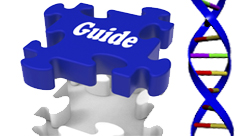Guidelines We Can Trust are Crucial for the Successful Implementation of Genomic Medicine
Posted on byIn a previous blog post, Michael Douglas and David Dotson from our office asked the question “So what are health care providers to do today when considering ordering a genomic test to diagnose, prevent or ameliorate a medical condition?” If we set aside the “genomic” bit of this for a moment, and think about how a health care provider might come to a decision about using any kind of medical test, the answer might well be that he or she would look to see whether any professional practice guidelines had been published that were relevant to the clinical situation in which use of the test was being considered.
Most clinical guidelines are published by professional groups and societies. While many are of high quality, an important contribution can also be made by independent groups evaluating a wide range of genomic applications using standardized criteria and methodology. The CDC sponsored EGAPP working group has developed recommendation statements for clinical uses of genomic tests, based on rigorous evidence reviews supplemented by a defined process in which the EGAPP Working Group (an independent, multidisciplinary panel) assesses the “magnitude of the net benefit and certainty of evidence, and consideration of other clinical and contextual issues”. The first EGAPP methodology was published in 2009 and was further refined to keep up with both a rapidly growing list of candidate applications, and a shifting technological landscape including next-generation and whole-genome sequencing.
The quality and trustworthiness of clinical guidelines is a topic that has attracted quite a bit of attention in the last few years; for example, the Institute of Medicine’s report “Clinical Guidelines We Can Trust” sets out seven standards such guidelines should meet. These include criteria for transparency; disclosure and managing of any conflicts of interest; stating the evidence base underlying any recommendations; methods for rating the strength of that evidence; a sufficiently rigorous process for external review, and provision for updating.
More recently, Gopalakrishna and colleagues have systematically reviewed the approaches used by groups developing guidelines for medical tests, considering both their “methodological characteristics”, defined as how the evidence base used for the guidelines was assembled, appraised and applied, and their “process characteristics”, which relate to the procedure followed in development of the guideline itself. Six methodological and five process categories are defined, and these are further divided into a total of 35 sub-categories.
So, how well has EGAPP done? Although the analysis by Gopalakrishna et al. was not intended to be a “beauty parade”, it does provide a useful check-list for guideline developers to assess how complete and robust their system is, and to identify any gaps or inadequacies that could be addressed. Among the 23 subcategories of methodological characteristics and 12 for process characteristics, EGAPP recommendations fulfilled 25 overall, including many areas relating to the soundness of its methodology for structuring the evidence search, gathering and appraising evidence, and formulating guidelines. The 10 subcategories not fulfilled by EGAPP included two relating to explicit criteria for bringing together and appraising different bodies of evidence, such as different systematic reviews or cost-effectiveness studies.
Interestingly, though, the other eight mainly concerned ways of making guidelines and recommendations more user-friendly for their intended recipients, such as piloting the guideline among stakeholders. Of all the groups evaluated by Gopalakrishna et al, the EGAPP working group is the only group that has focused exclusively on genomic medicine applications.
New diagnostic and prognostic tests are constantly being developed. Arguably, one of the biggest growth areas is in genomic tests, which now cut across virtually every clinical discipline including oncology, cardiology, neuroscience and infectious diseases, to name just a few. Although representing only a tiny fraction of genomics publications, most of which report primary research, the numbers of published guidelines for genomic applications are growing too. Our office’s ongoing horizon scanning effort identified 38 such articles published in a single year from May 2012 to May 2013. The articles reflect guidelines and recommendations from several organizations and expert groups in the US and around the world and cover topics across the lifespan.
As genomics becomes part of mainstream healthcare and public health, many if not most professional societies and guideline developers will begin to integrate genomic topics in their recommendation making. Because of the rapidly developing nature of the field, it will become increasingly crucial for minimum standards and review methods be developed and applied by various groups. Guidelines we can trust will become a cornerstone of the successful implementation of genomic medicine in practice.
Posted on by



